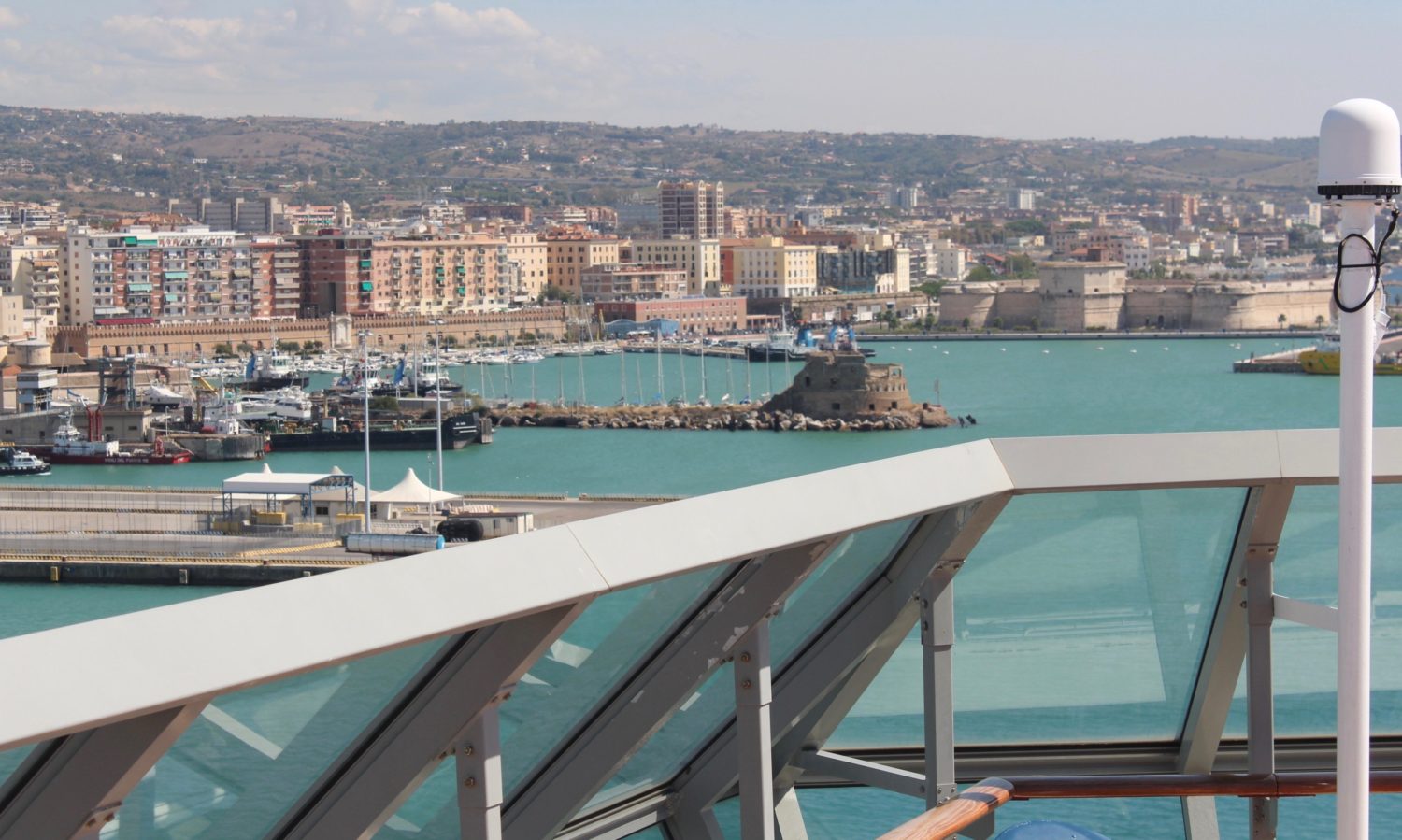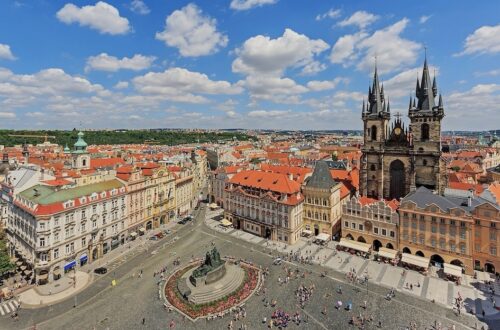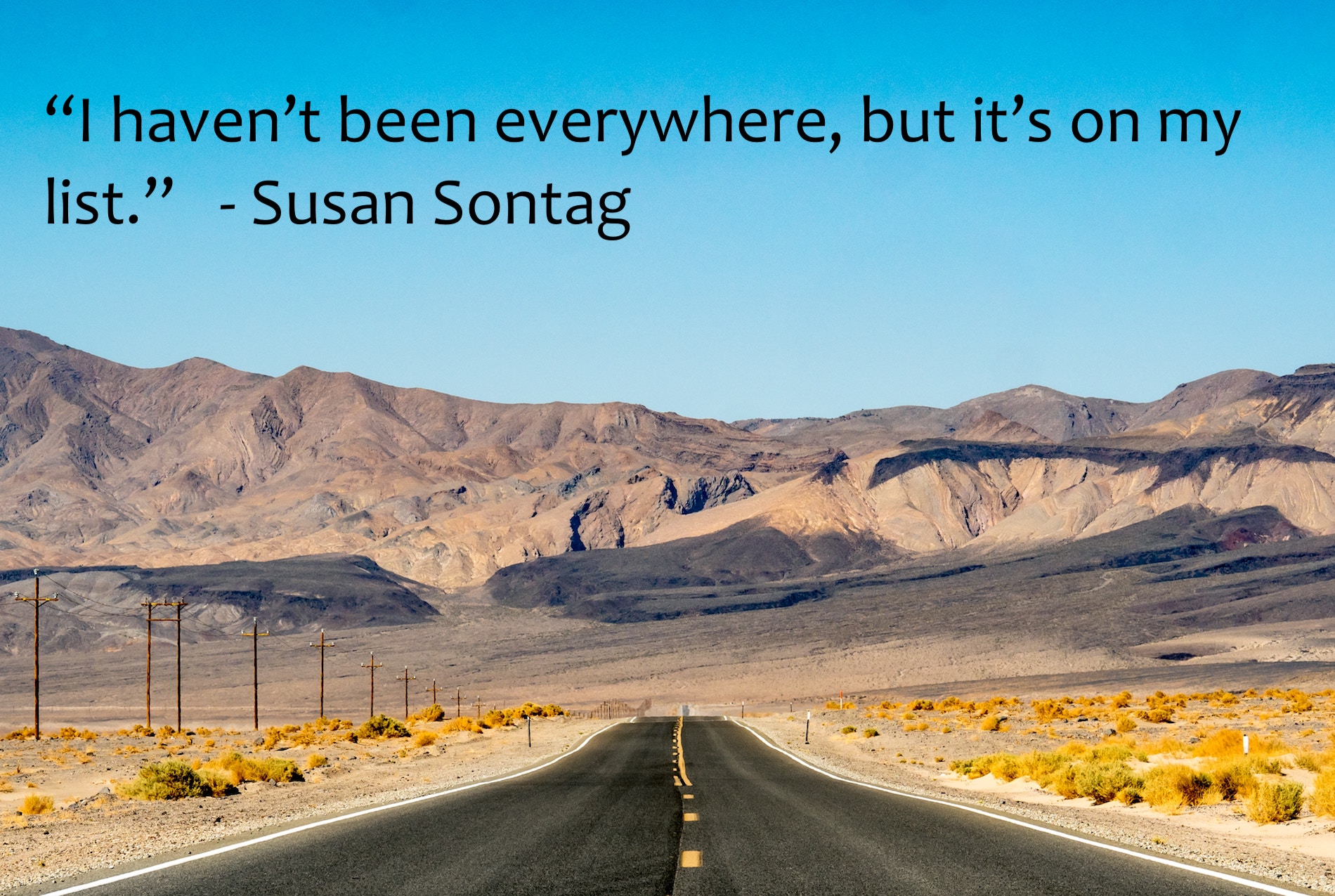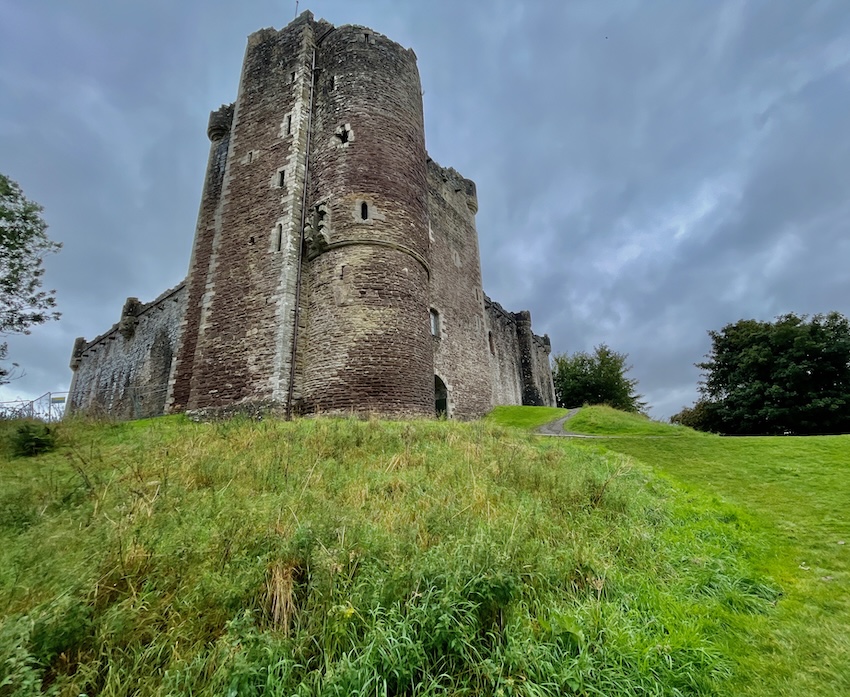
Scotland: Outlander Castles, Villages, and More
The wheels came off this trip on the first day, literally, but that was after the cyberattack and the volcanic eruption.
‘Tis but a scratch, as Monty Python’s jesters would say. We finally made it! After visiting Duone Castle, above, where Monty Python and the Holy Grail scenes were filmed in 1975, we recalled those cheeky jesters, who made careers out of mocking life’s tribulations. What would they do in our situation? Why they’d laugh and carry on; it’s just a flesh wound. I mean, why waste some of life’s precious minutes whining about problems? Be like the joyful jesters.
All right just a wee bit of whining, since the story’s rather entertaining. We arrived at Seattle’s Seatac airport in the midst of a two-day cyberattack and feared a flight cancellation. As we descended into the chaos of check-in, we found dark electronic screens, boards, and check-in counters. Icelandair agents sent us off to security with hand-written paper tickets, which were incorrect. Then they almost boarded us on the wrong flight.
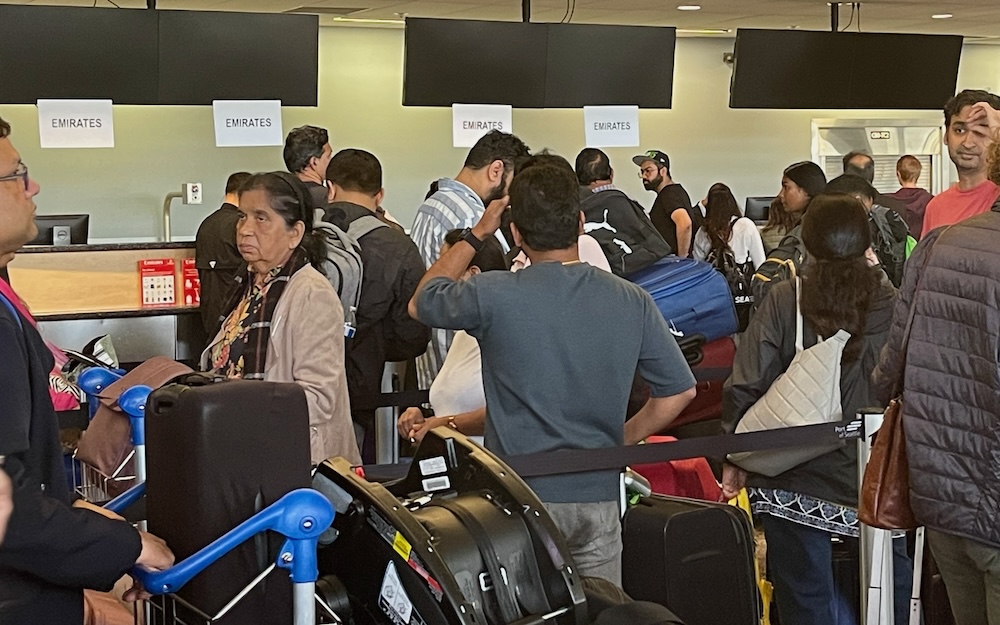
Don’t know how they managed, but Icelandair had us wheels up almost on time – yay Icelandair! And curses, Icelandair, because you forced me to check my favorite carryon bag and destroyed it when you ripped its wheels off in transit. Luckily I packed light, and managed to consolidate things down to one bag.
So enough with the whining. Now to the cool stuff we’ve seen so far.
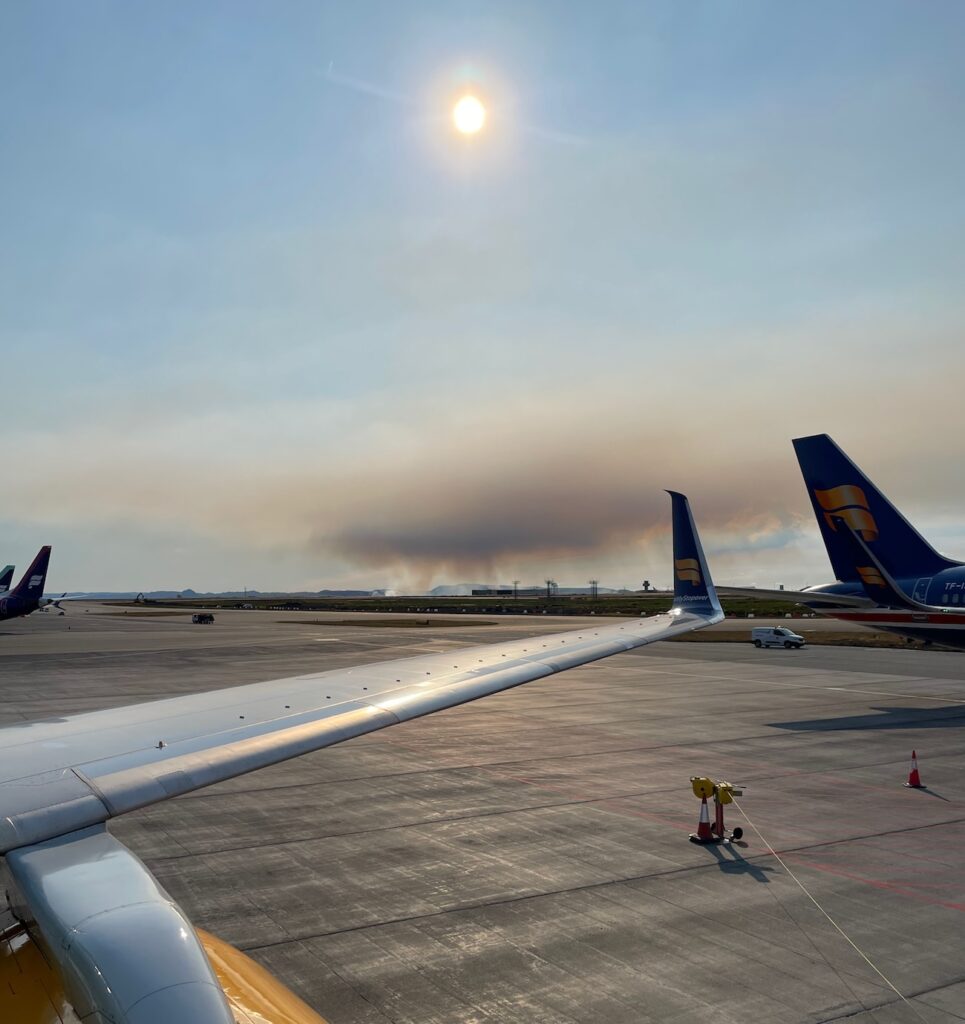
Our layover in Rekjavik, Iceland, included a volcanic eruption, which did not threaten us or cause delays. We gawked at the darn thing smoking away right there, next to the plane. It’s humbling to think how we’re always just one rumble away from destruction at any given moment, right? Also thrilling.
On to Scotland then. Architects built our Glasgow Airbnb, a three-room Victorian flat in one of Glasgow’s original tenement buildings, to house Glasgow’s burgeoning middle class during the late 1800’s Industrial Revolution. Padre spotted eight different church steeples from the drawing room window, and our steep walk down – and up – the hill to the shops reminded us why our ancestors look so trim in those ancient family photographs.
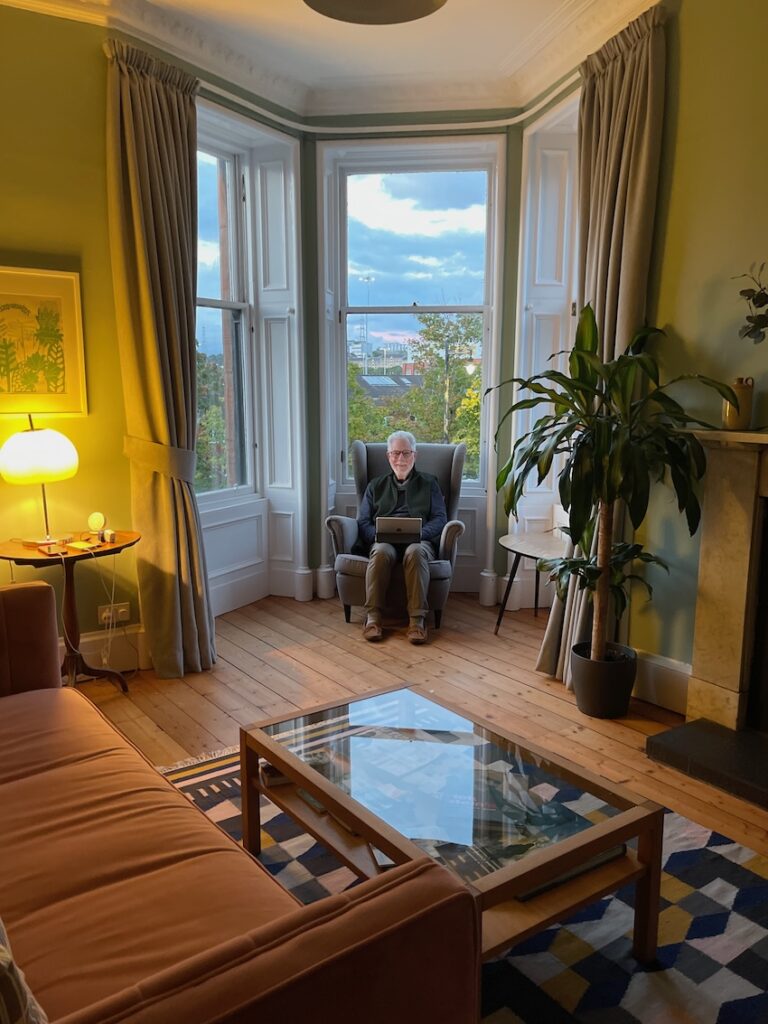
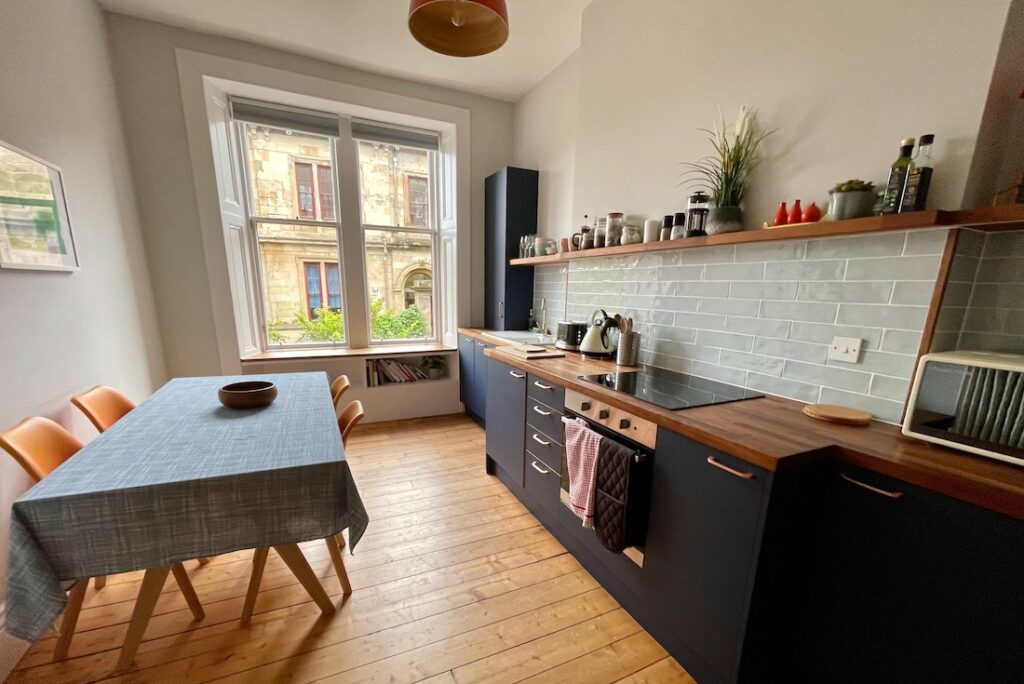
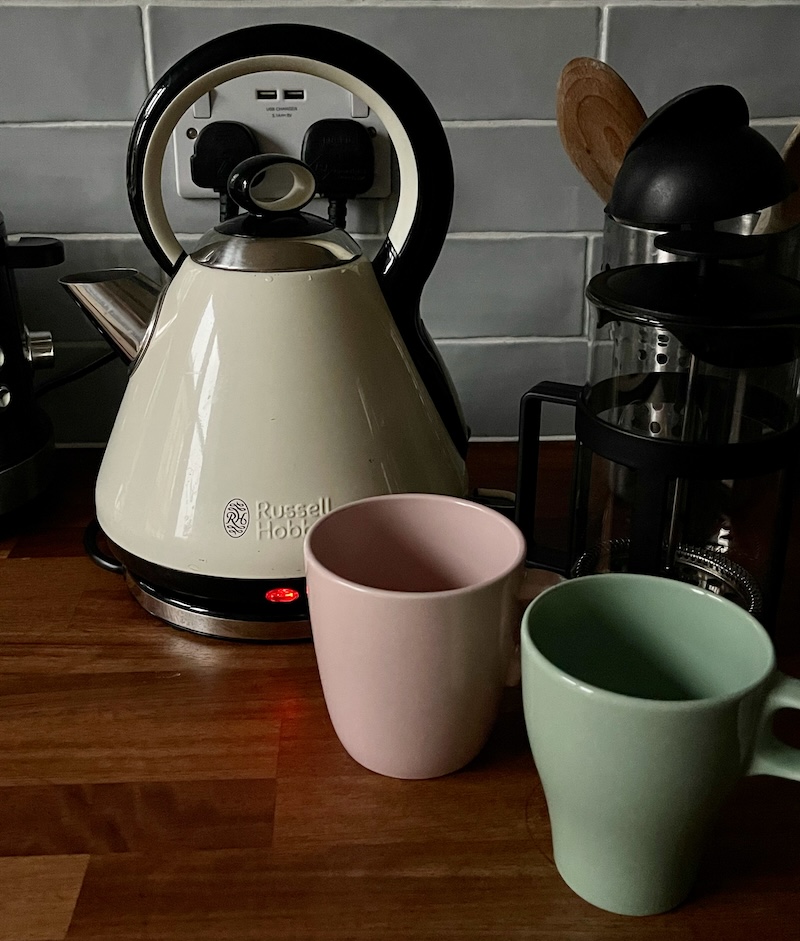
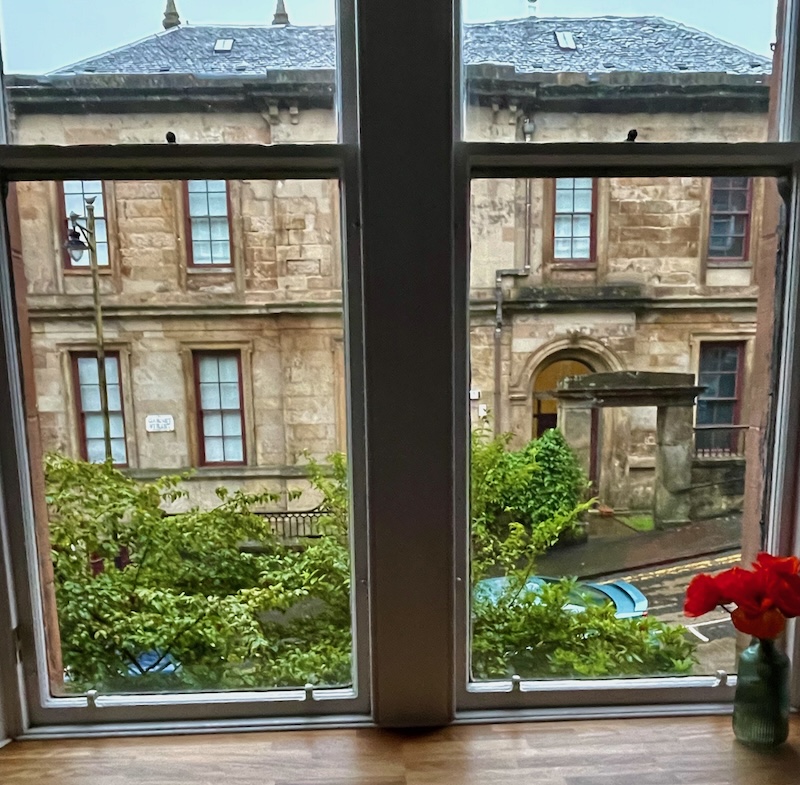
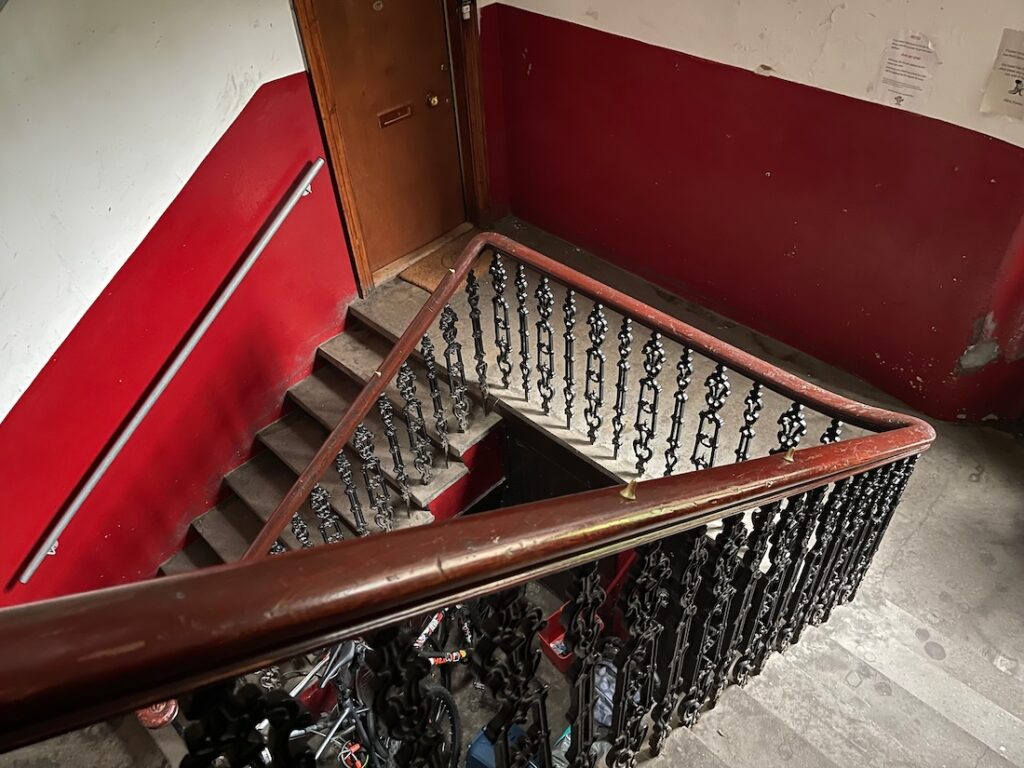
The flat’s battered entry hall, iron stairway, and old skeleton key hinted at its historic past, but inside the vibe was all classy refurbished condo. Glasgow called these buildings ‘tenements’ back in the day, but these were not the squalid crowded structures of 1800s New York. Glasgow had plenty of slums then, of course (they didn’t call it ‘the largest slum in Europe’ for no reason), but our flat sat in the classier part of town. We didn’t have enough time to visit The Tenement Museum just down the block, but hear it’s a wonderful peek into real lives of real people, who lived here long ago.
So on to another kind of classy, at least by medieval standards: Castles. We watched Netflix’s Outlander series in preparation for this trip, because the show shoots primarily in Scotland. Much of the story’s action takes place in the 1700s, and Outlander creators retrofitted several medieval castles for sets. Scotland’s National Tourist Board talks about The Outlander Effect, where Outlander fans like us crawl all over the ruins of old Scottish castles – or piles of rock, as one local termed them. So the dramatic increase in tourist traffic due to Outlander’s popularity fuels a booming new tourist castle economy.
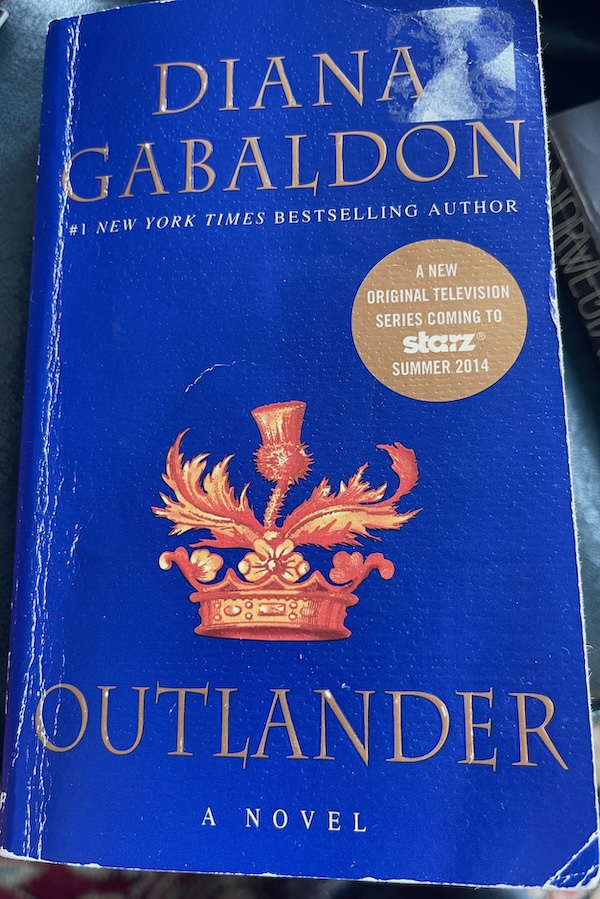
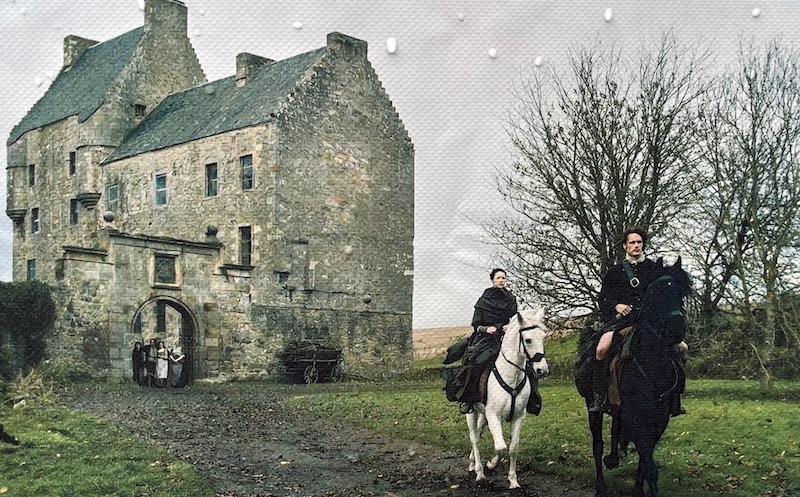
Let me qualify the ‘fan’ part, though: I’m a fan, and not a fan. The Outlander story brims with steamy romance, bloody battles, and kilted frat boys. It’s a guilty pleasure more suited to my younger self, when I still believed in fairytale romance (silly me). I read the first Outlander book but grew impatient within a few chapters, even though it’s a swashbuckling page turner. (I struggled to ignore the gratuitous violence, sexual assault, and formulaic writing, and avoid the popular Coleen Hoover books for similar reasons. Forgive me, Outlander and Hoover fans…)
So it’s not the story that kept us glued to the series, but the sets. The sets are cracking great, as the Brits might say.
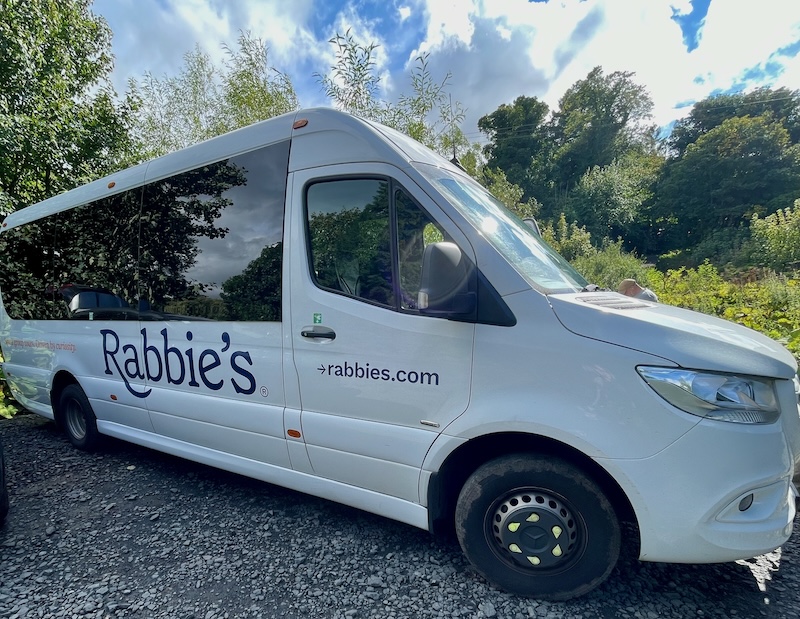
We ubered our way to Glasgow’s Buchanan Bus Station, where we joined highly rated Rabbie’s Tours for an all-day jaunt to nearby castles and towns featured in the popular Outlander series. Before Outlander actors and Python jesters frolicked on the lawn, Duone Castle served as James I’s castle after he executed the owner. Then other royals lived there from 1424 to 1603. We’ve learned that Royals liked to execute castle owners to close their real estate deals, instead of making proper offers like normal people.
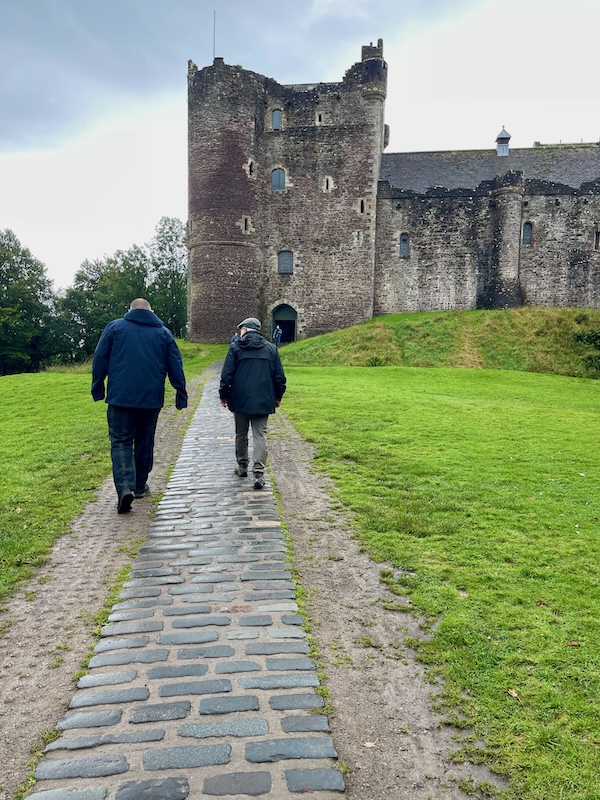
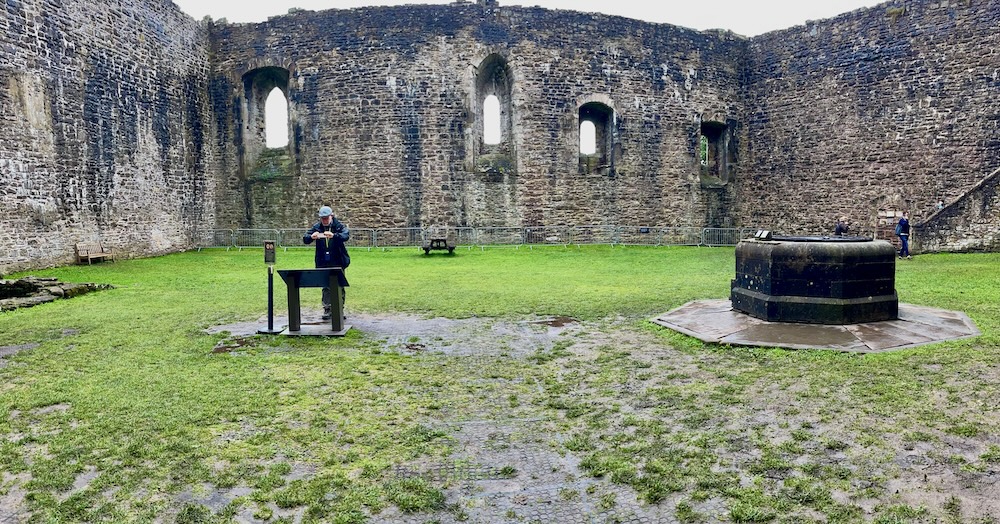
Duone Castle, named Leoch in the series, serves as the fictional seat of the Clan Mackenzie, clan of dreamy Jamie Fraser, our series’ male love interest. For Outlander filming (still underway today), set designers covered the castle’s medieval cobbles with layers of plastic, straw, and heavy mud to protect them. Then they built an entire village bustling with horses, blacksmiths, weavers, thatched huts and other 18th century stuff. Canisters of smoke created the ethereal Scottish mist, and roasting pigs, pans of porridge, and Mrs. Fitz, the mother figure, made the place seem downright homey.
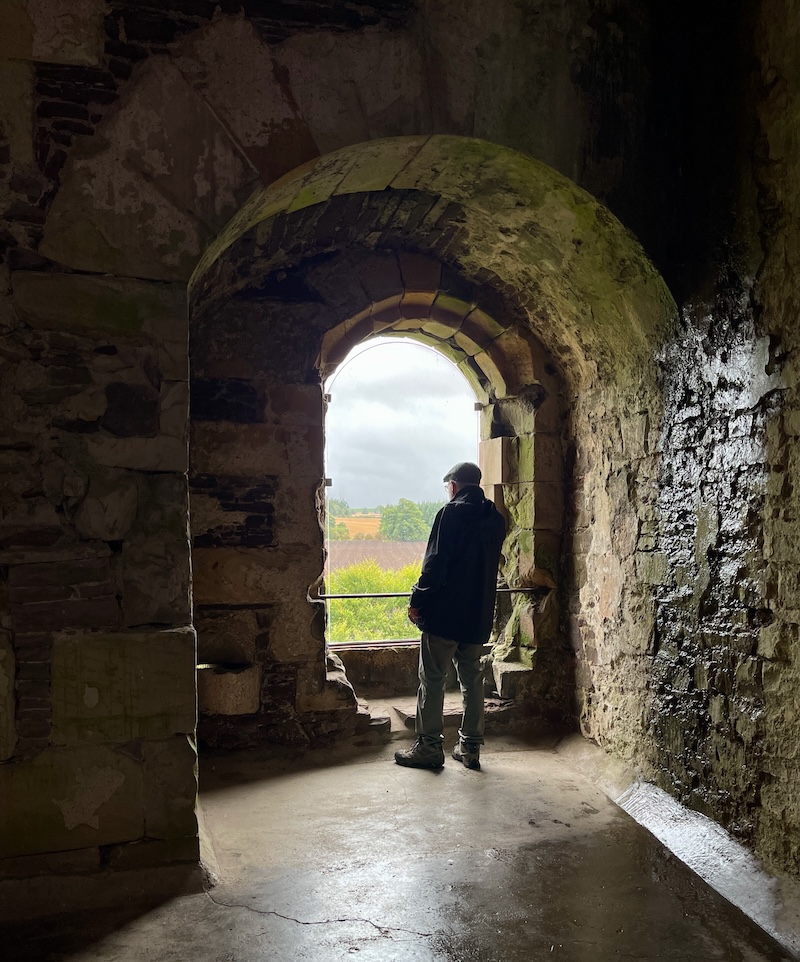
In reality, Duone Castle was a just pile of rocks until set designers found it. An 1880s restoration brought the once formidable fortress back to basic castle form, and you can see the castle’s crenellated battlements and murder holes, through which defenders reigned death down upon attackers. While Python fans still stage coconut shell reenactments on the lawn out front, that same tranquil expanse probably hosted some raging bloody battles once upon a time.
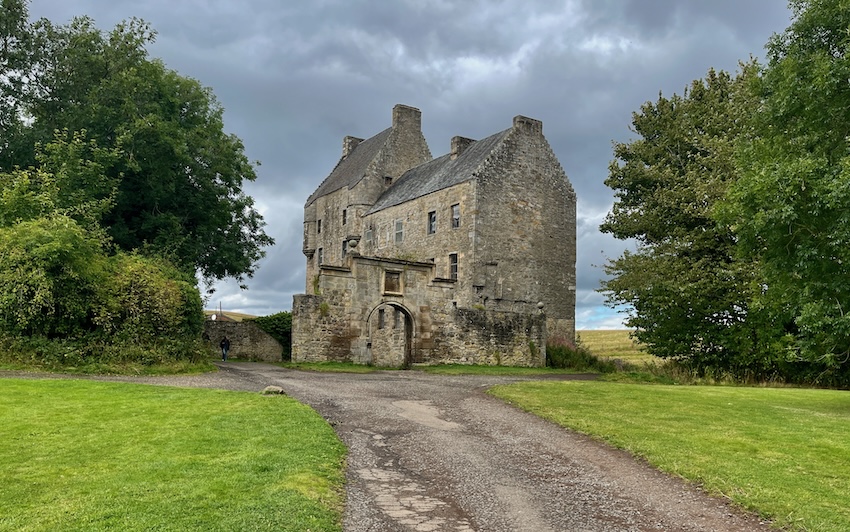
Next, on to Midhope Castle, located on Jamie’s fictional family land, the lovely Lallybroch. Only external shots of the ruin were used in the series since the castle’s insides have been derelict since the 1800s. Gary the guide explained how cinematographers used green screens and other effects to create their illusions. Our dashing hero, Padre, posed in the same arch as Jamie did, and we’re sure Padre would have served as a notable clan hero, no doubt. Or at least an extra.
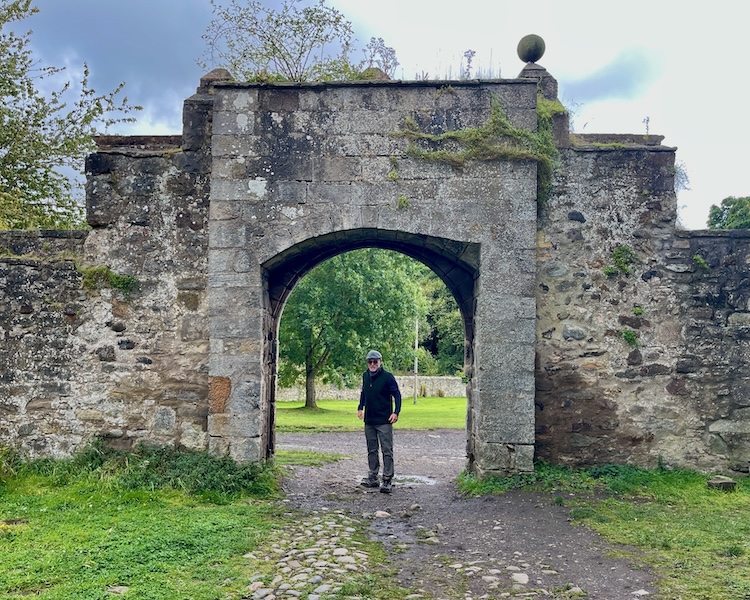
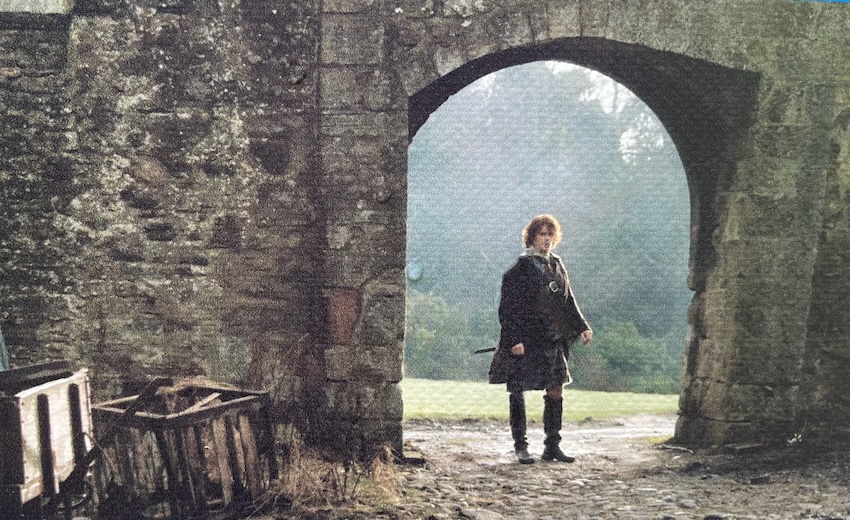
A stone-carved marriage lintel, inscribed AD 1582, commemorates newlyweds Alexander and his wife Marjory Bruce’s nuptials, as well as their ownership of Midhope Castle. We’ve carved initials in our cement stairs back home, but our lintels just don’t have that 1600s flair. We need to step up our game. Our initials may last, though, far beyond us. Stone and cement have a habit of outlasting the humans, don’t they?
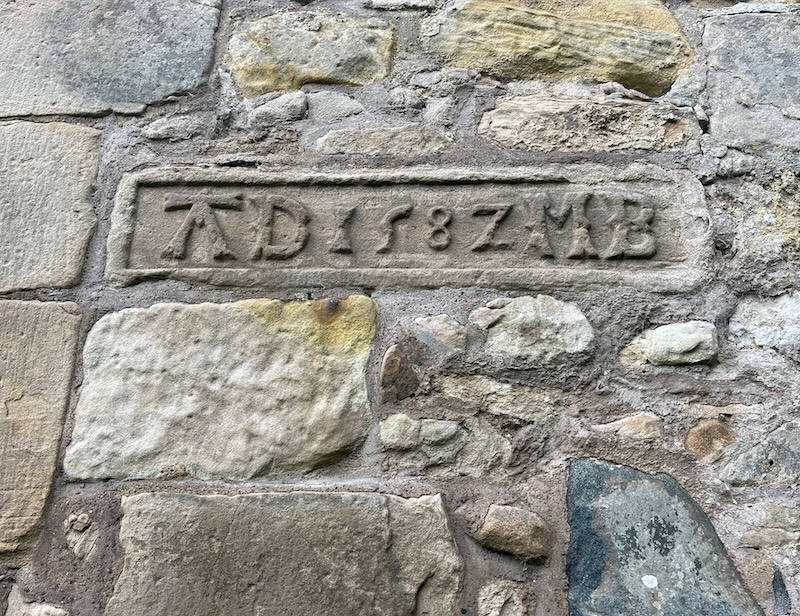
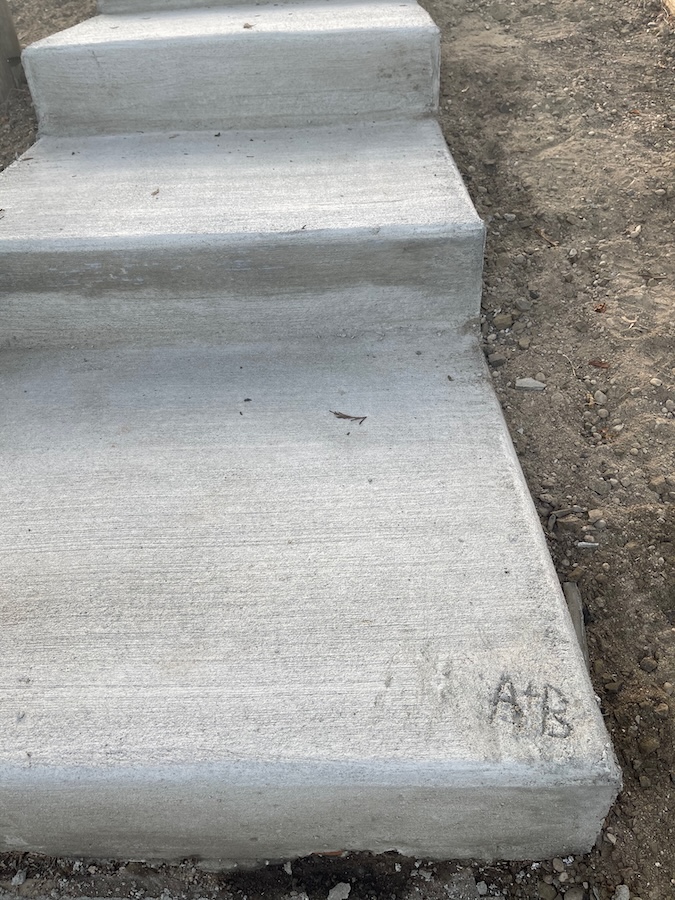
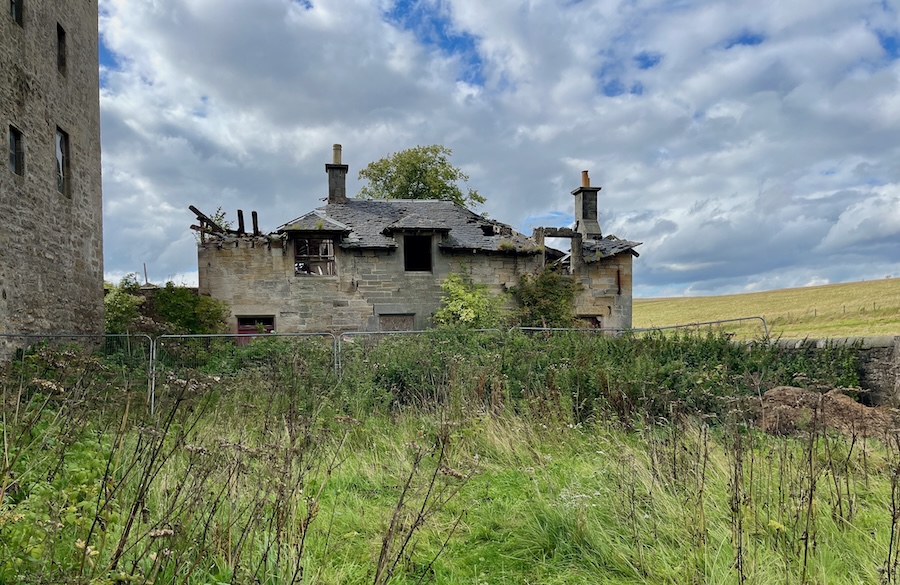
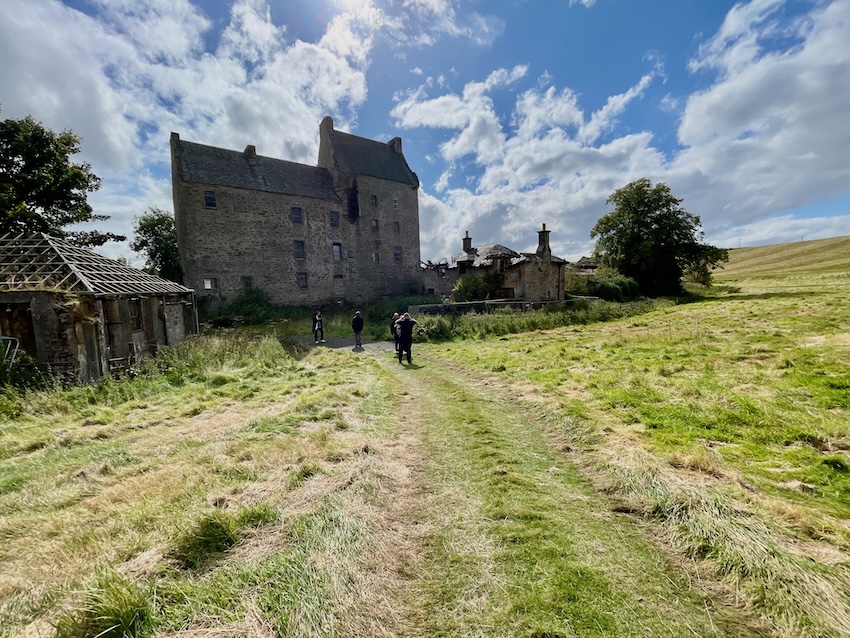
Next stop: the village of Falkland, Outlander’s stand in for 1940s Inverness. At the very start of episode 1, after the gorgeous Scottish landscape scenes, our fictional heroine, Claire, intones, ‘People disappear all the time’ – which sets the theme and starts the Outlander story rolling. Then we see her peering in a window of Farrell’s General Store, bemoaning the fact she’s never lived anywhere long enough to set down roots and never owned a vase. Today, the store is called the Fayre Earth Gift Shop, and I didn’t see vases for sale in there but plenty of nice things for the tourists. Mrs. Baird’s Bed and Breakfast, where Claire and her 1940s husband, Frank, stayed on their honeymoon, is in reality the Covenanter Hotel. One stormy night Claire stares down from one of the hotel windows at the town square, and the ghost of Jamie (maybe) lurks by the fountain. The fountain’s still here, and busloads of tourists continually hop out to snap photos of it.
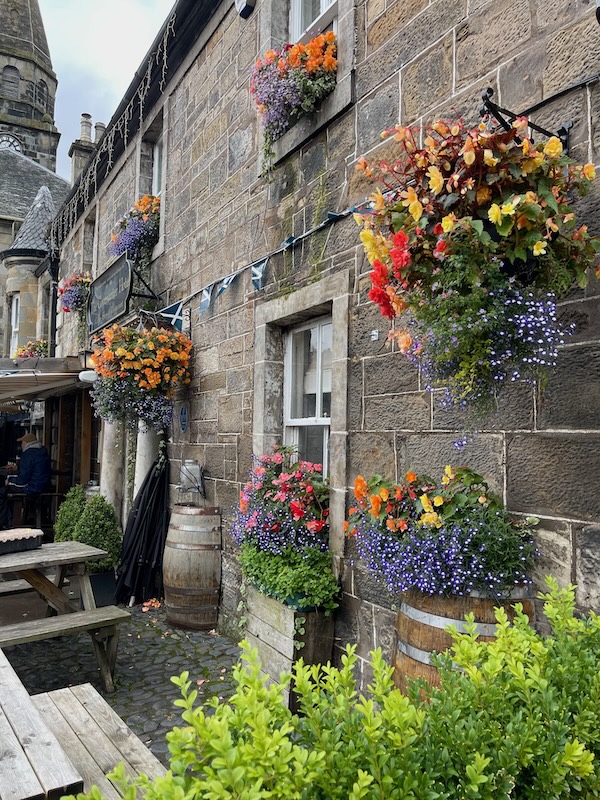
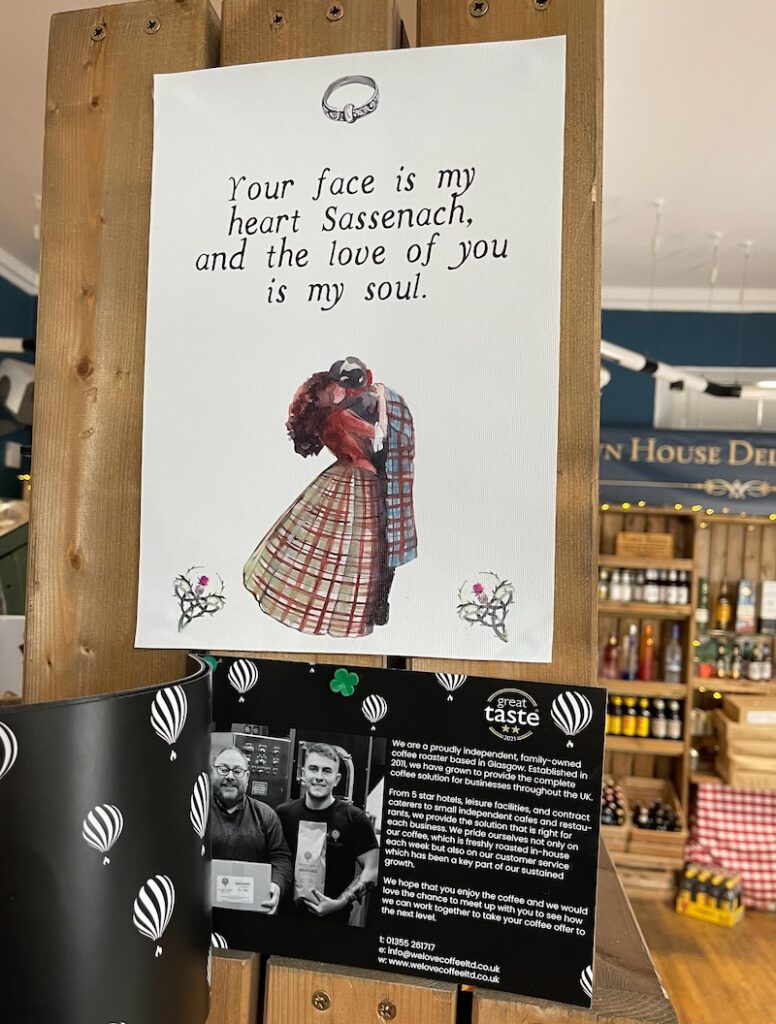
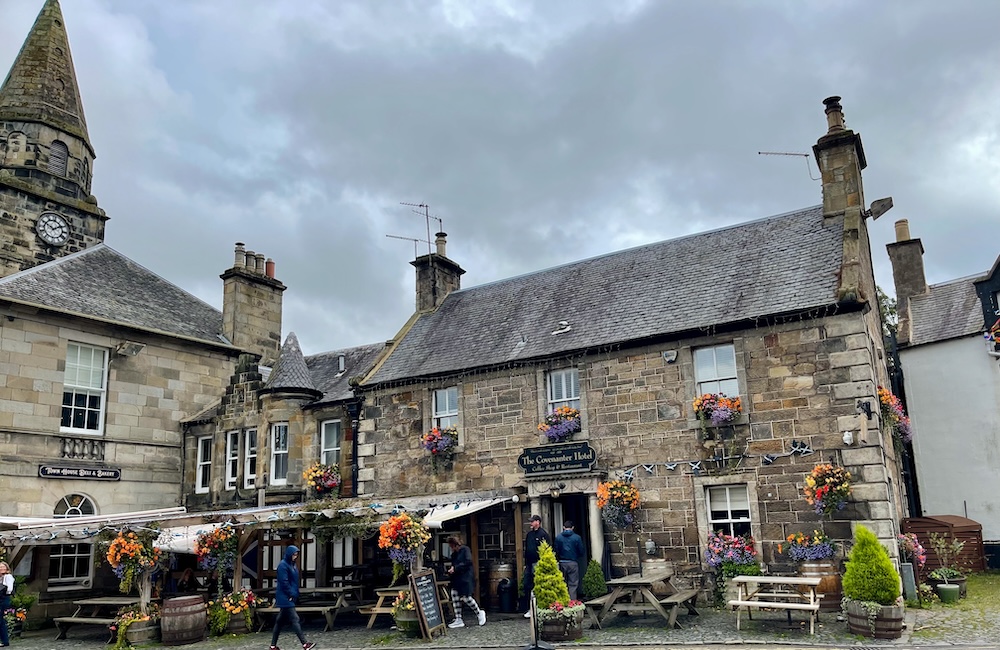
Now, on to Blackness Castle, a formidable 15th century fortress that stands in for the real Fort William. The castle’s name comes from the color of the stones near the River Forth, not the darkness that lurks here in the Outlander series, even though it did serve as a prison and ammunition dump back in the day. Our villain, Captain Randall, has Jamie flogged and attacks Clair here. To escape, they jump from the battlements. Whoa – we looked down from the top, and nope. Not a good gamble. I wonder if the stunt doubles pulled that jump off?
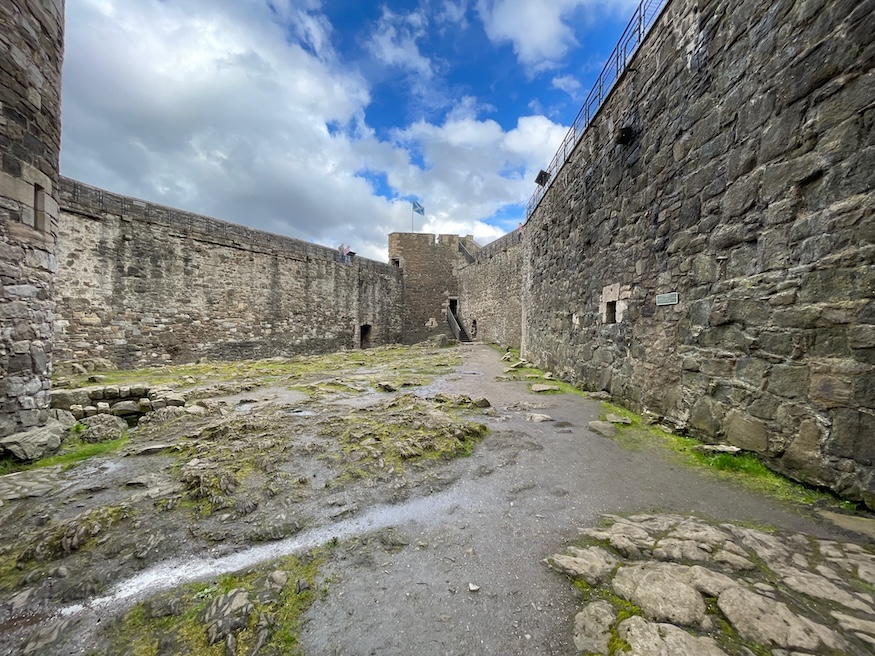
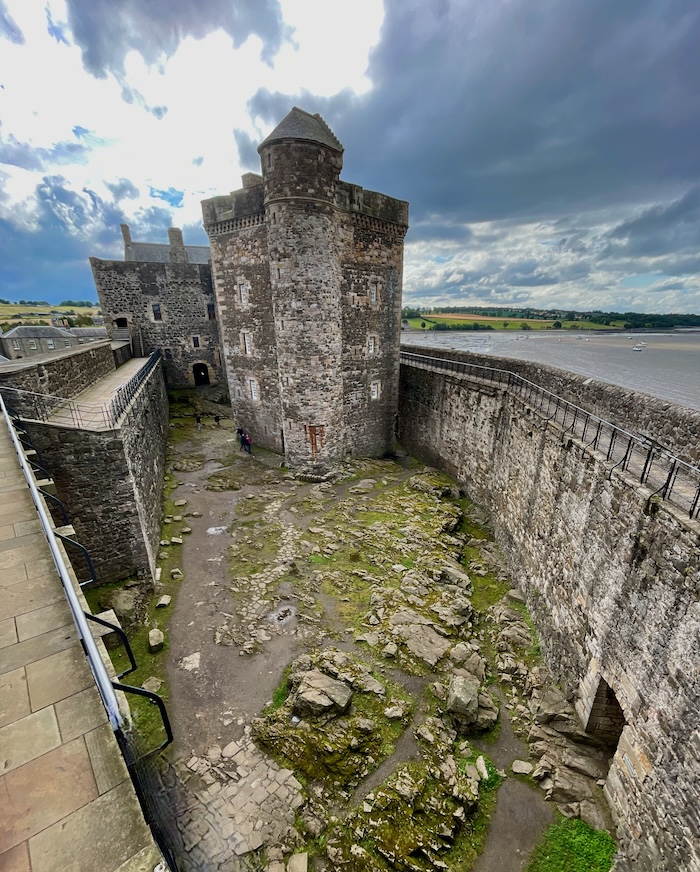
The charming cobbled village of Culross still looks like something right out of the 17th and 18th centuries. Claire tends her herb garden here, and Culross Palace serves as backdrop for several Outlander scenes (including one of the steamy bedroom scenes). Culross’s Mercat Cross, where the old market stood, marks the spot Claire pretends to faint when Jamie rescues a boy whose ear is nailed to the pillory. Sounds bad but at least they didn’t cut his hand off, a common punishment for thieves back then.
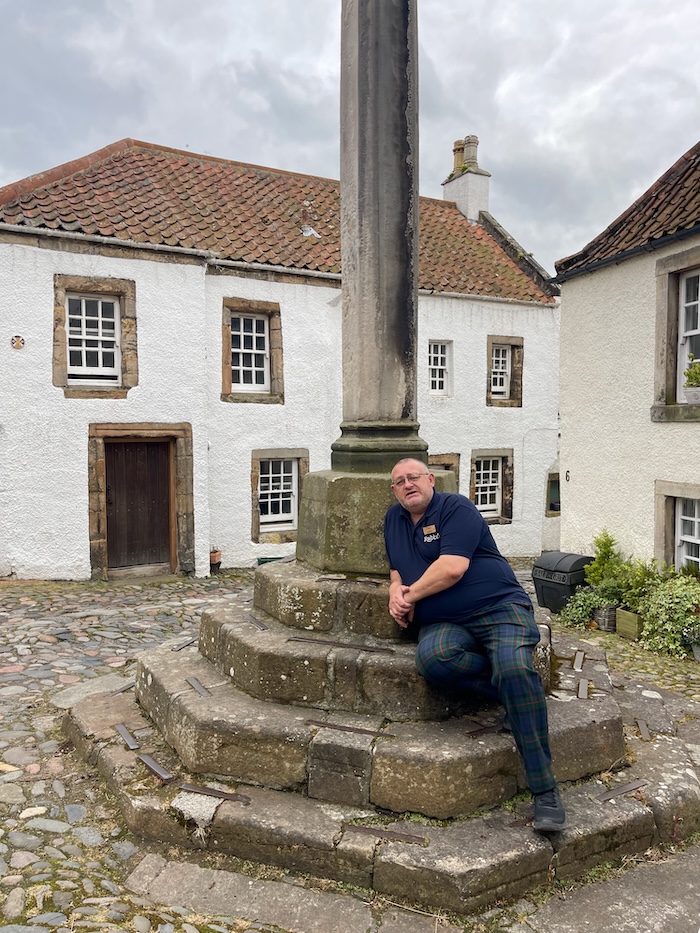
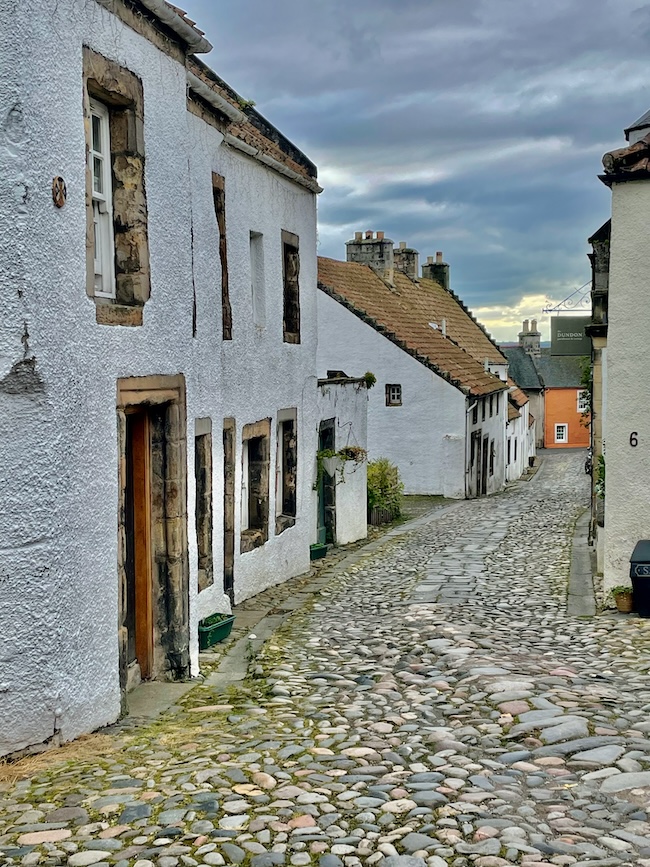
In actual history, plenty of thieves probably did get their hands chopped off here, and witches were sentenced to burn or drown. Powerful leaders (usually church elders) pointed out possible suspects, then the citizenry burned, drowned, or hung them as witches in late 16th and 17th century Scotland. Most of the ‘witches’ were women – spinsters or widows with no means of support and no way to defend themselves. The ladies frequently served as local herbalists and healers, so when Outlander character Geillis is sentenced to death here in Cullross’s Merkat (market) square, it rings true to history. So why are single, talented women so scary? A subject for a later discussion, that one.
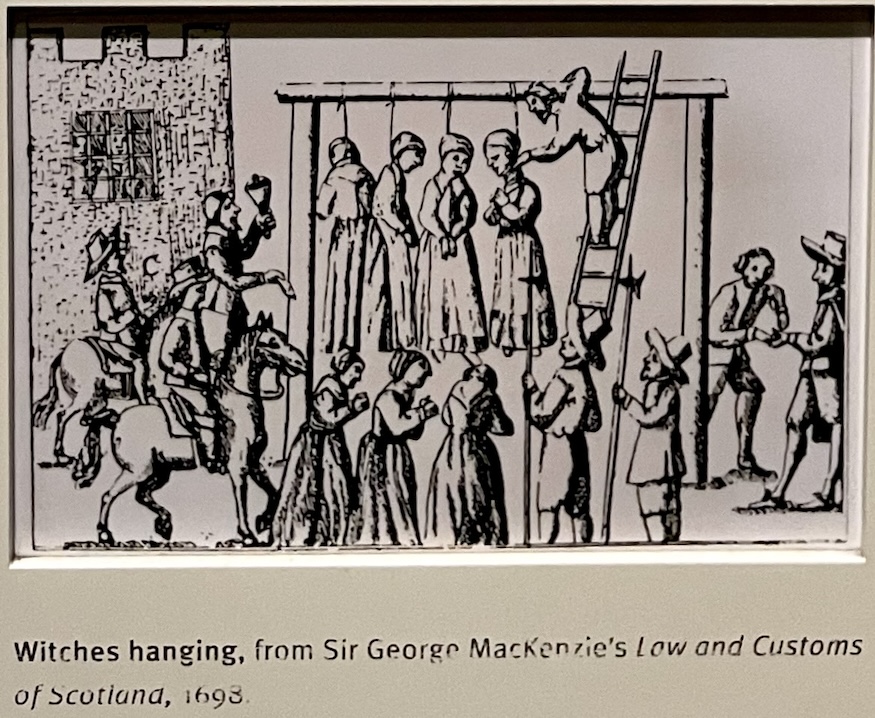
We also learned all about kilt culture here in Culross, where Gary the guide told us about how much it costs to buy a good set ( at least $2500) and to what occasions he wears the regalia (weddings, funerals, town functions). He uses his as a substitute for business attire, so not that much more than a set of good business suits.
Of course, he also sported a fancy pair of plaid slacks for our tour. Pretty perfect, I’d say.
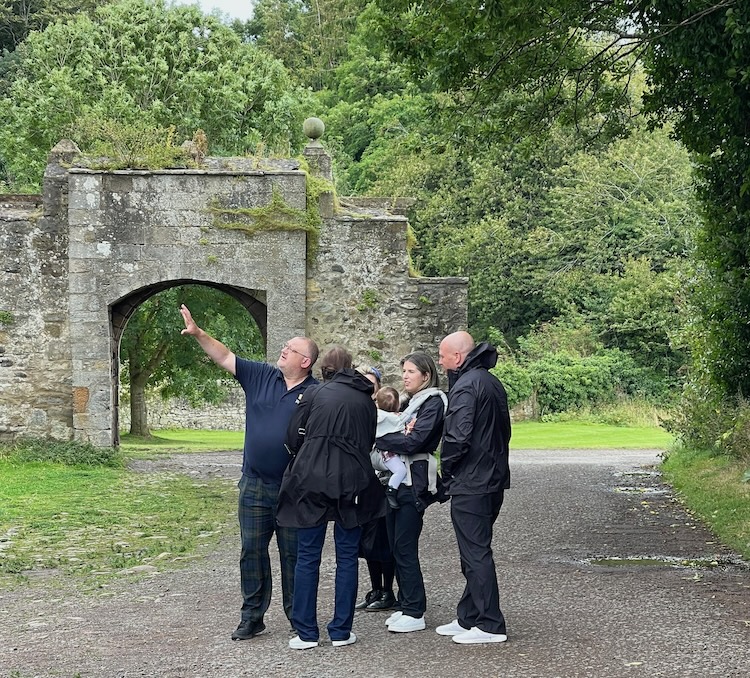
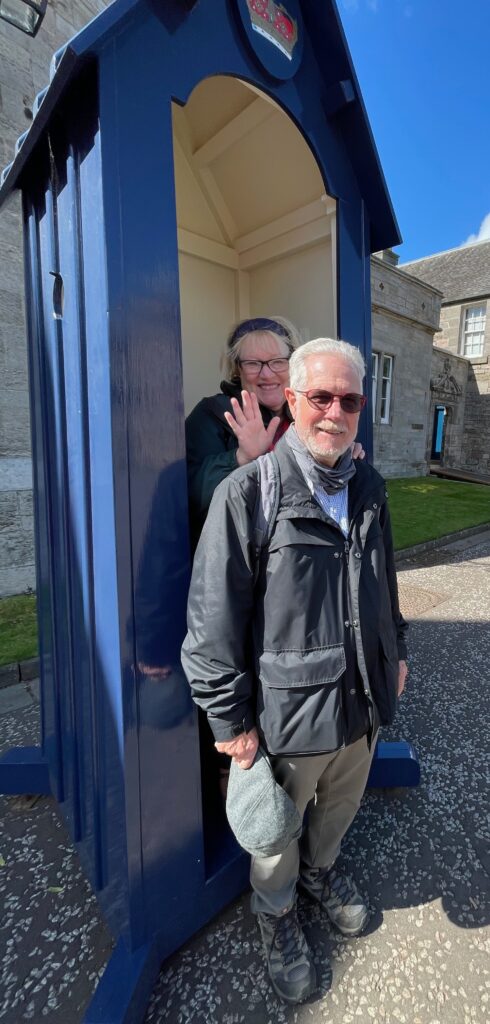
Next up: On to Edinburgh, meeting up with our friend Pat, and another Outlander shooting location: the Palace of Holyrood House, which also happens to be King Charles II’s summer place. Until her recent death, Queen Elizabeth II would serve tea to thousands in Holyrood’s garden, where she delighted in helping to pour and share tea with the common folk. That would be us, and we’d love to have tea with the royals someday. I mean, why not?
So far, so good, so on we go. Thanks everyone, for joining us on our Scotland wanderings.
